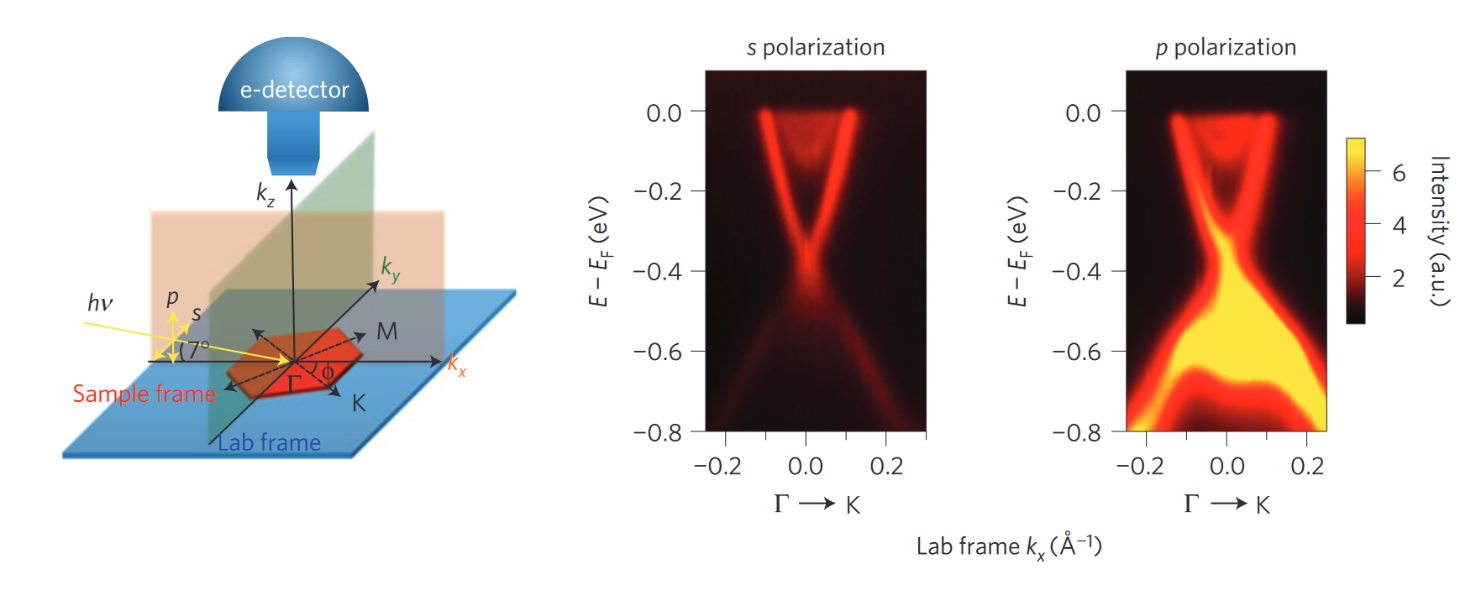Research
Magnetic Topological Insulators
Magnetic Topological Insulators combine both properties of topological insulators and time reversal symmetry breaking induced by spontaneous magnetic ordering. This is believed to support bizarre quantum phenomena such as the Quantum Anomalous Hall Effect (QAHE). Our work was the first to point out the existence of a strongly gapped topological surface state on heterostructures of MnBi2Te4(Bi2Te3)n with high resolution ARPES experiments. This work could pave the way towards new devices that exploit the topology and spontaneous magnetic order of this material system.
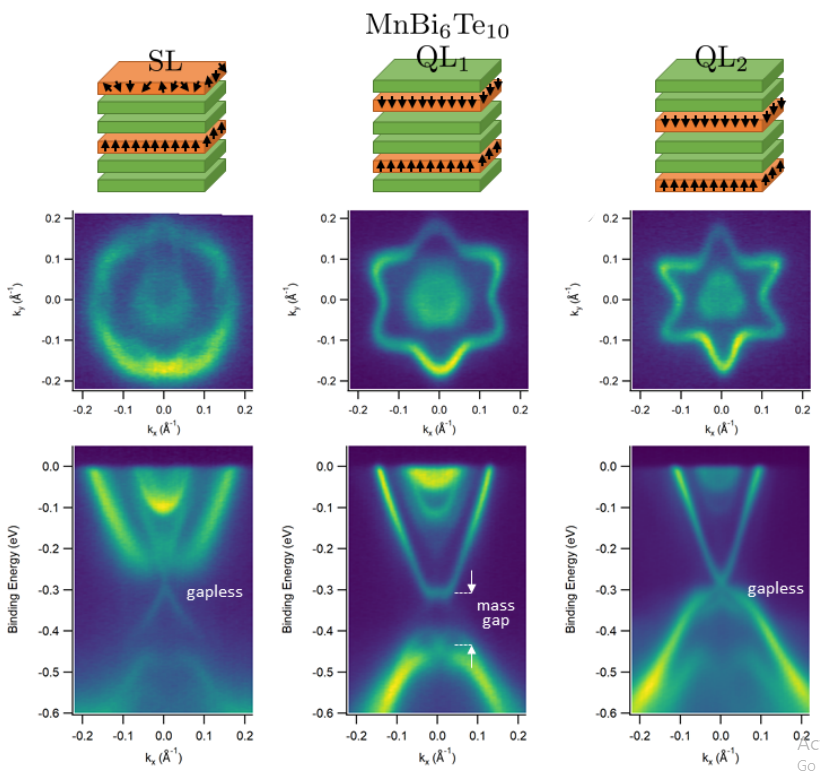
Pair Interactions in High Temperature Cuprate Superconductors
Strong electronic correlations are the signature of the cuprate high Tc superconductors. Using a newly developed ARPES analysis technique, we discovered a feedback mechanism that enhances superconducting pairing due to the strongly correlated physics in cuprates.
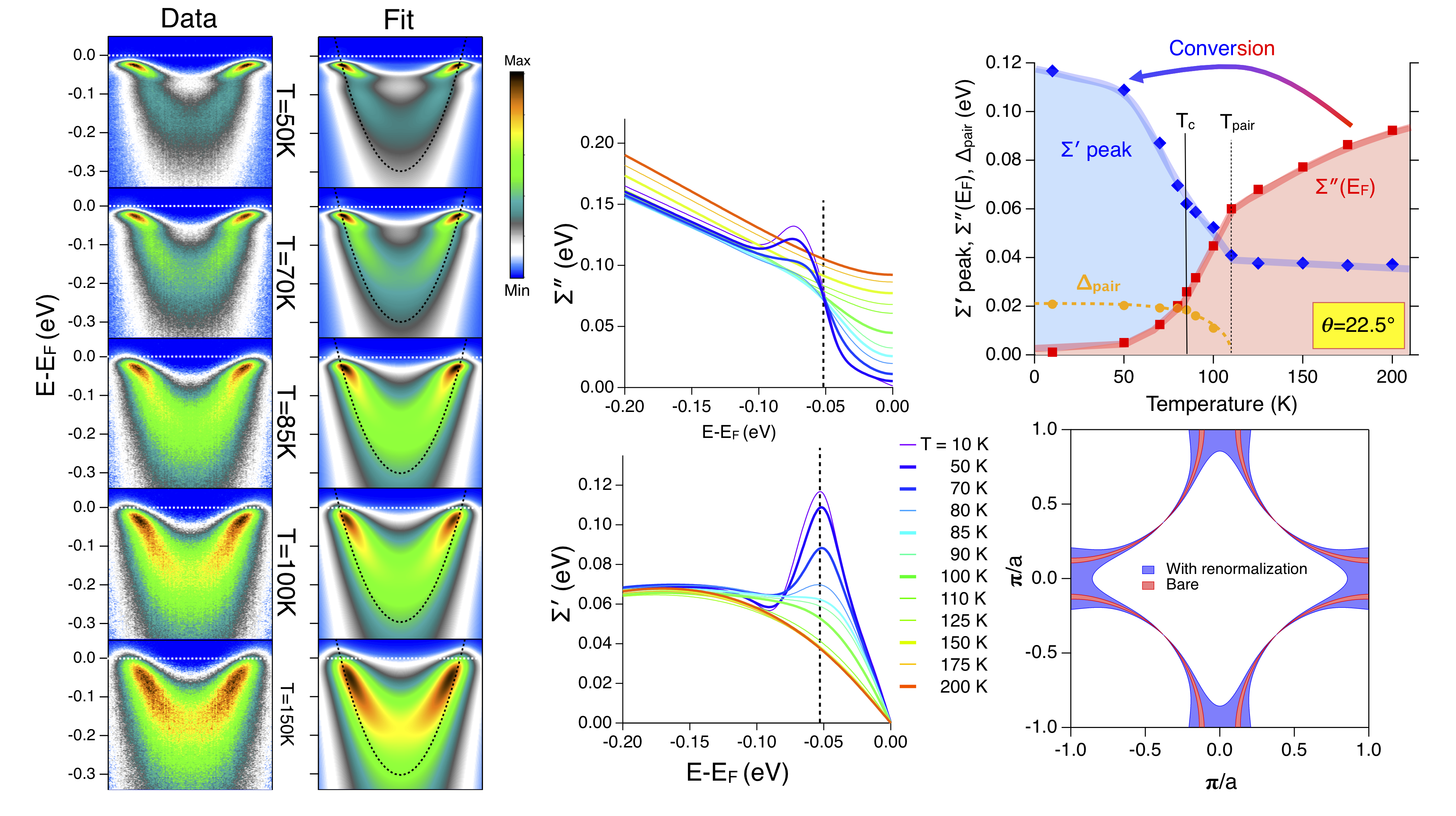
Topological Superconductivity
The hunt for the benchmark topological superconductor (TSc) has been an extremely active research subject in condensed matter physics. Using ARPES, we show the presence of Dirac Nodal Lines and the corresponding topological surface states on the [010] faces of the Tc=39K s-wave BCS superconductor MgB2.
Phys. Rev. B 100, 184511 (2019)
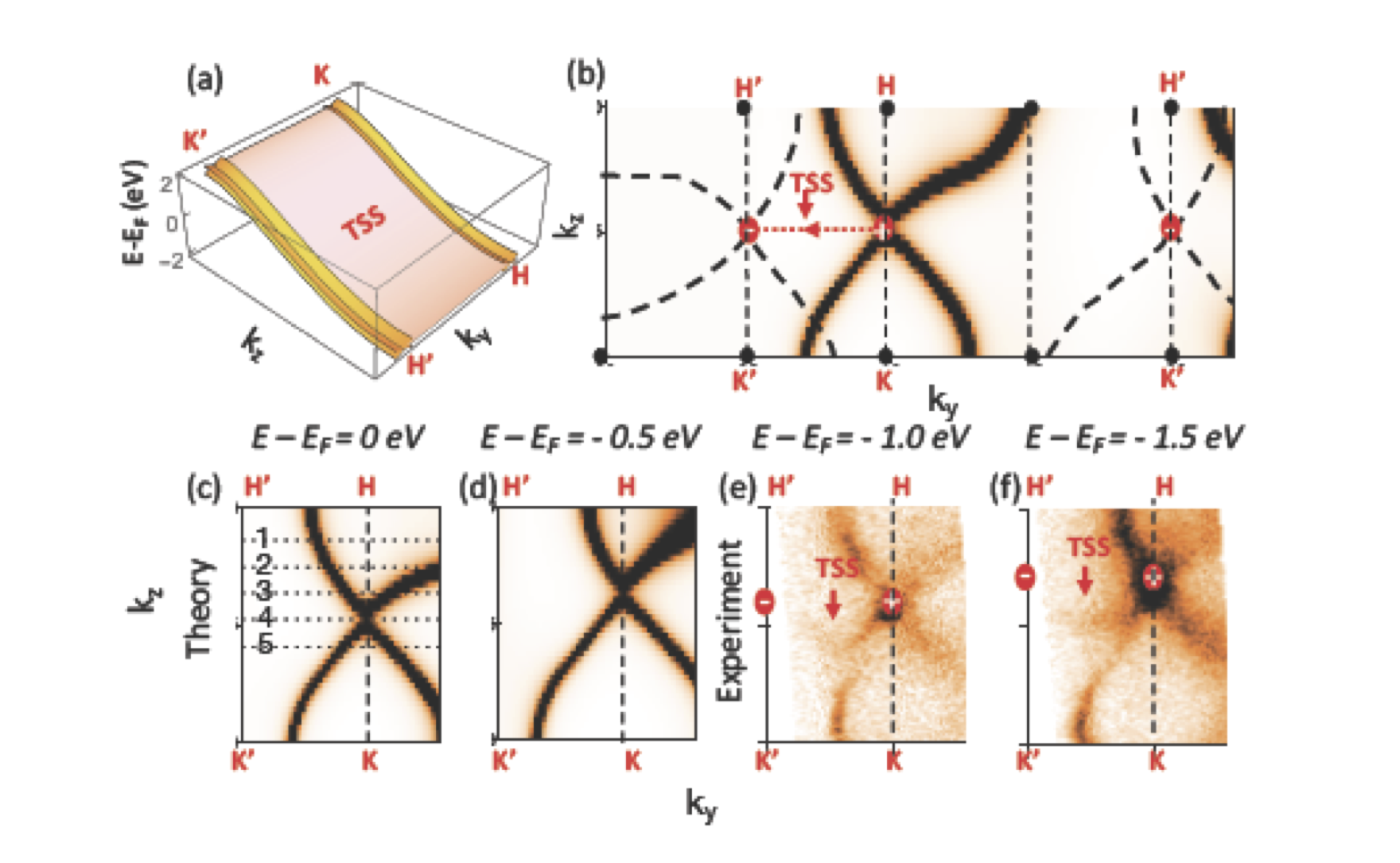
Organic Superconductors
Our lab recently discovered a spectral gap that persists towards 120 Kelvin in potassium doped terphenyl crystals, a strong candidate for high temperature superconductivity.
Phys. Rev. B 100, 064511 (2019)
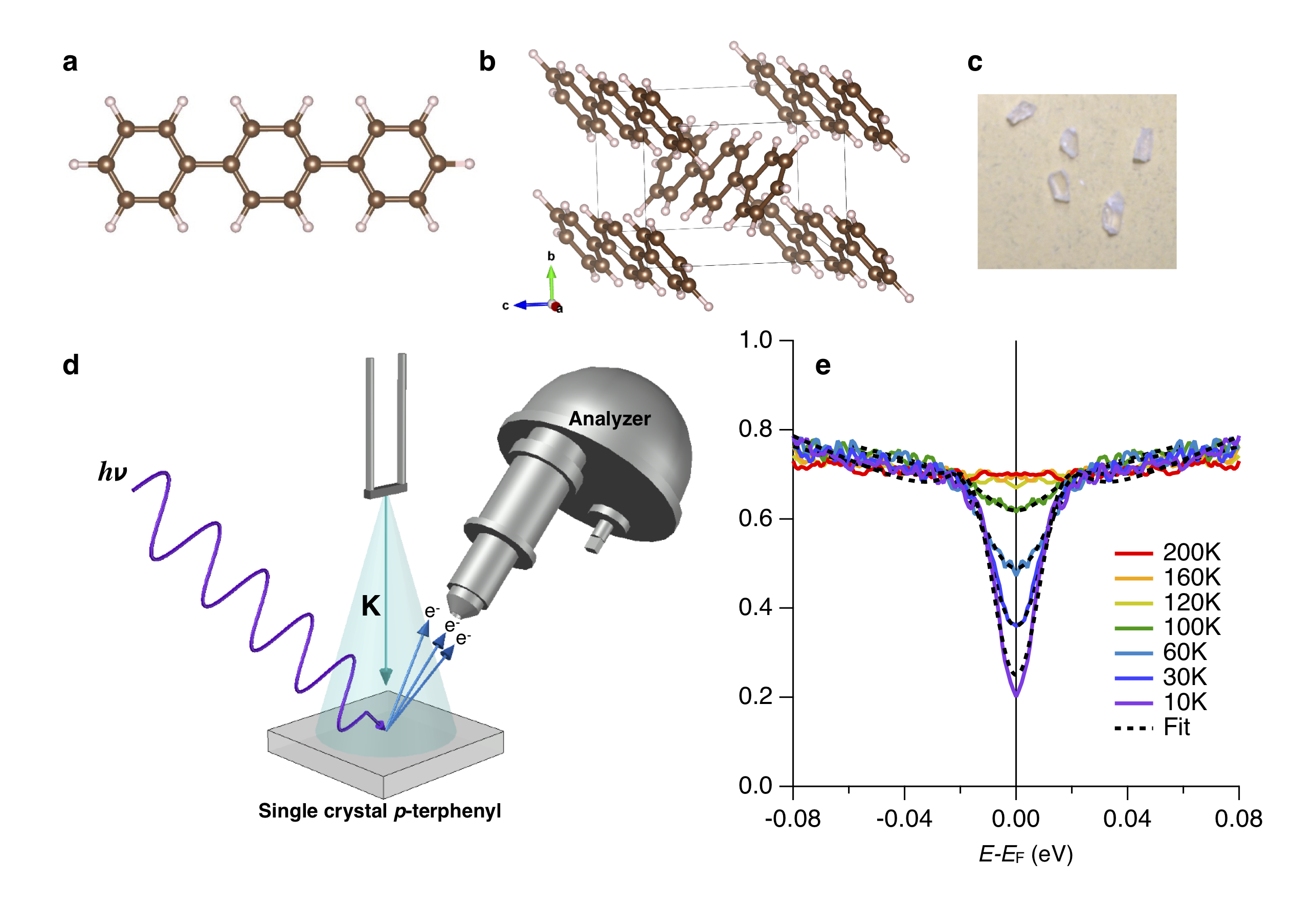
Time-Resolved ARPES
In time-resolved ARPES, we optically excite a material to a non-equilibrium state. We then photoemit the sample with femtosecond temporal resolution to measure the electronic structure as a function of time.
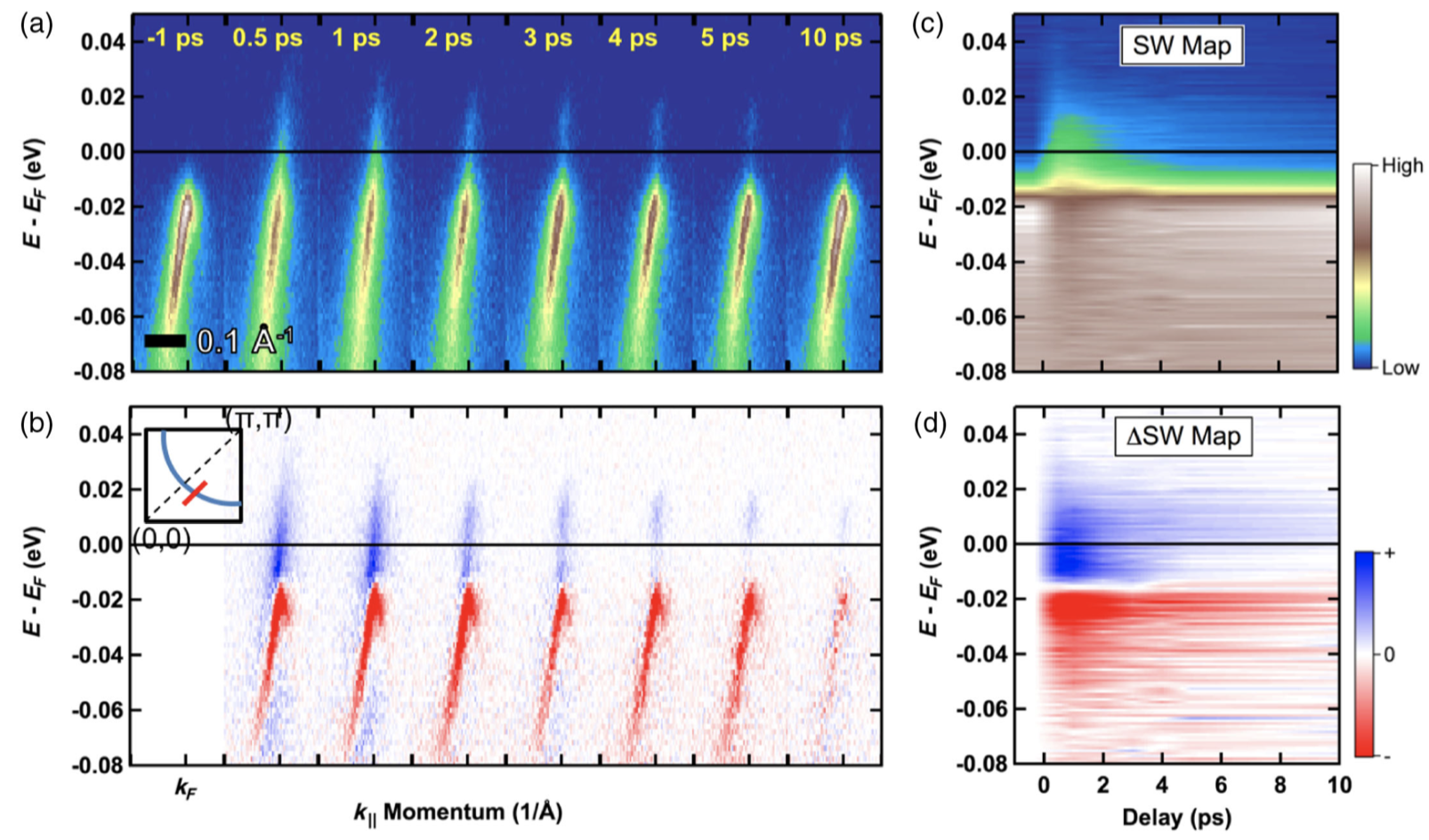
XMR Materials
Recent debates in the literature over the relationship between topology and Extreme Magnetoresistance (XMR) have drawn attention to the Lanthanum Monopnictide family of binary compounds. We used ARPES to study the electronic structure of the XMR topological semimetal candidates LaBi, LaSb, and LaAs
npj Quantum Materials 3, 24, 2018
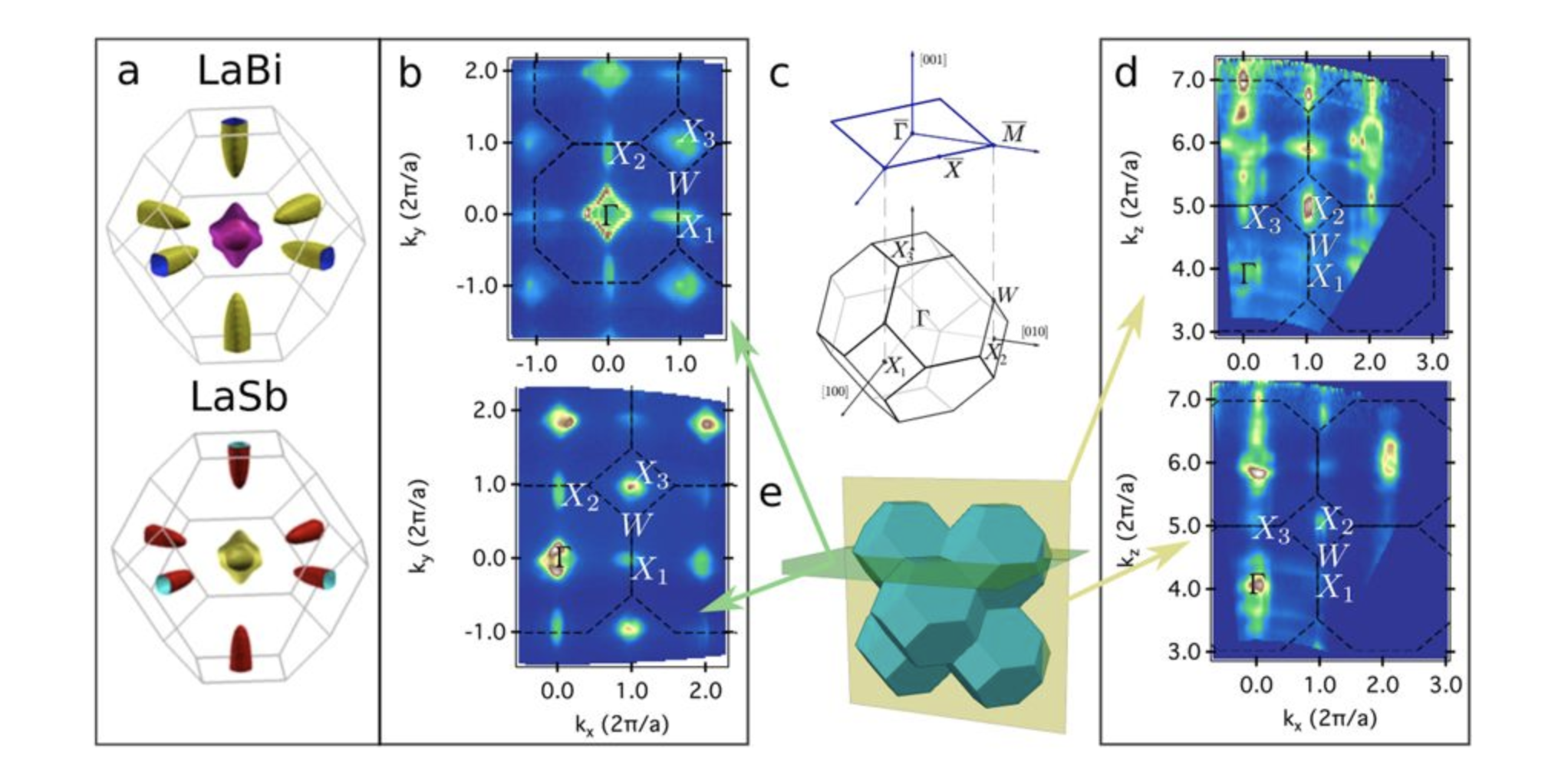
Mimicking Cuprates—Layered Nickelate materials
Layered nickelates have the potential for exotic physics similar to high Tc superconducting cuprates as they have similar crystal structures and their transition metals are neighbors in the periodic table.

Iridates
The physics of doped Mott insulators remains controversial after decades of active research, hindered by the interplay among competing orders and fluctuations. It is thus desirable to distinguish the intrinsic character of the Mott-metal crossover from other competing effects. To that end, we have investigated the evolution of electronic structure and dynamics of the hole-doped pseudospin-1/2 Mott insulator Sr2IrO4. The doped iridates exhibit multiple iconic low-energy features previously observed in doped cuprates: pseudogaps, Fermi arcs and marginal-Fermi-liquid-like electronic scattering rates
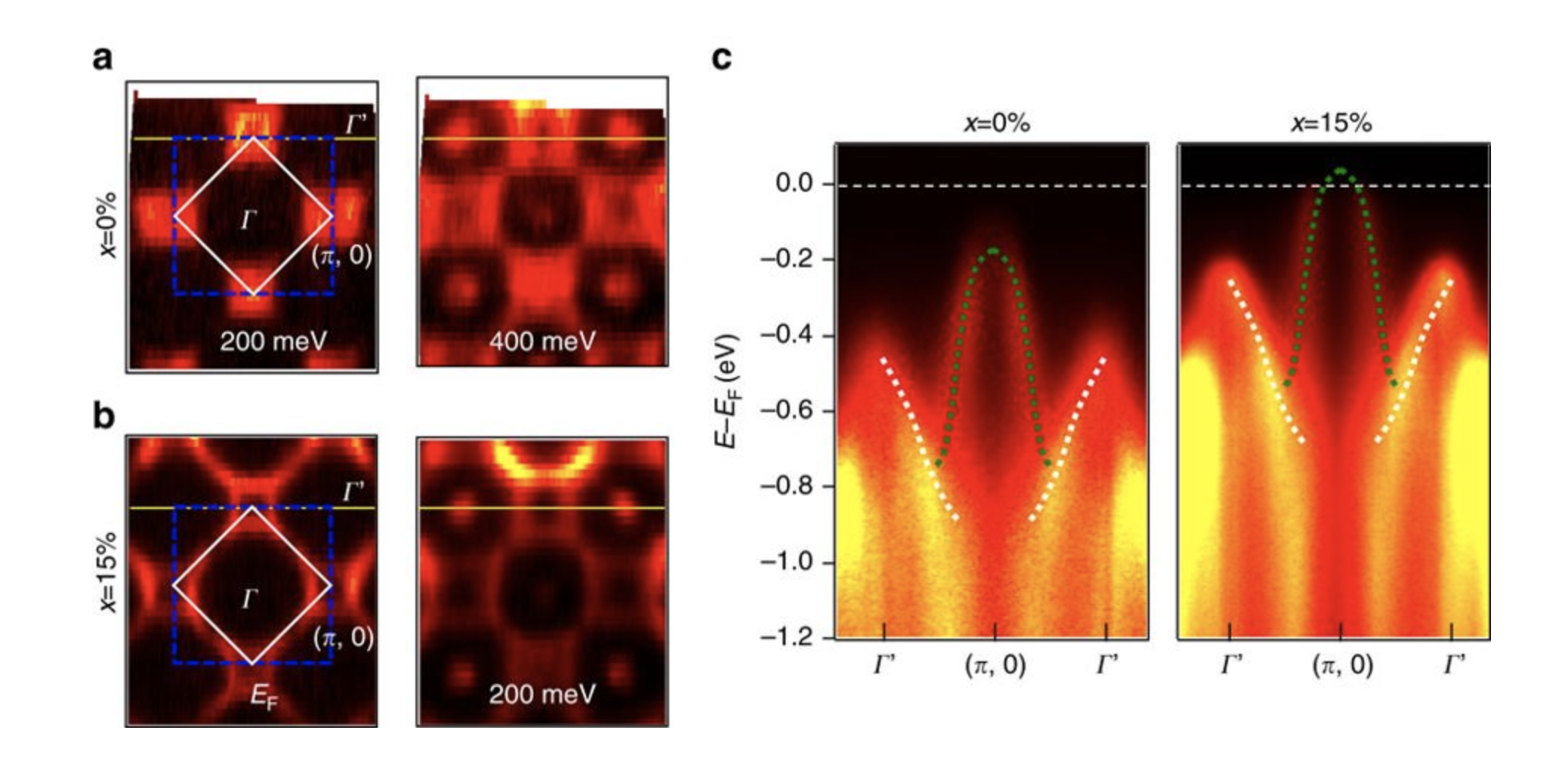
Topological Insulators
Combining orbital-selective ARPES experiments and first-principles calculations, we deconvolved the in-plane and out-of-plane p-orbital components of the Dirac wavefunction in topological insulator Bi2Se3
